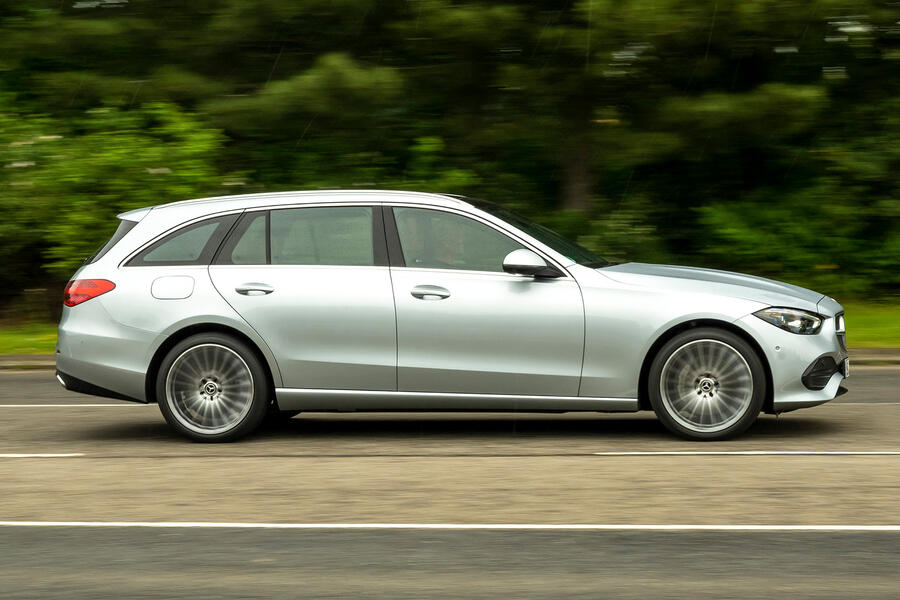What is it?
We drove the new Mercedes-Benz C-Class last week overseas but we’ve now driven it in the UK, albeit still early left-hand-drive examples.
The one most different from last week’s test car was this C200 petrol estate, presented in a slightly unknown spec because it’s non-specific to any particular trim level. But it did run on swanky 19in wheels and have a high-specification interior.
The estate is the same 4751mm length as the saloon, unlike the previous model, which was a touch longer than the four-door, while it has a 490-litre boot (rising to 1510 litres with the seats folded), all but the same (500-1510 litres) as the C-Class’s arch rival, the BMW 3 Series.
The other boot numbers – the ones on the outside – don’t always correlate to engine capacity these days and this C200 is no exception, with a 1.5-litre petrol engine with integrated 48V mild-hybrid starter-generator that boosts low-end torque and response.
The engine provides 201bhp and 221lb ft, and, briefly, the motor another 20bhp and 148lb ft, but you can’t just add the numbers together to get a maximum because both elements won’t be working their hardest at the same time.

